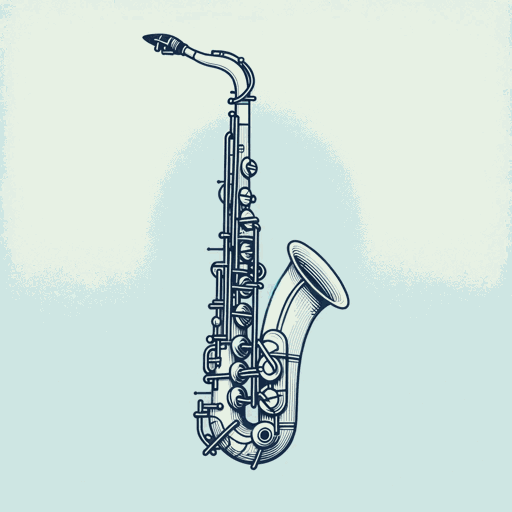45 pages • 1 hour read
James BaldwinNobody Knows My Name: More Notes of a Native Son
Nonfiction | Essay Collection | Adult | Published in 1961A modern alternative to SparkNotes and CliffsNotes, SuperSummary offers high-quality Study Guides with detailed chapter summaries and analysis of major themes, characters, and more.
Summary and Study Guide
Overview
Nobody Knows My Name: More Notes of a Native Son (1961) by James Baldwin is a collection of essays which serve as a companion to the author’s earlier anthology, Notes of a Native Son (1955). The work covers topics such as discrimination, segregation, police brutality, racial violence, and identity. The essays in this compilation comprise Baldwin’s experiences and thoughts during the end of his nine years in Paris and return to the United States. Baldwin served as a witness to the civil rights movement and explored the complexities of issues that remain relevant today. Baldwin’s work has had a major influence on contemporary American writers and thinkers. He is considered one of the greatest American essayists and thinkers.
This guide uses the First Vintage International Edition published in 1993.
Content Warning: The source text discusses racial discrimination and violence and includes references to hate crimes, sexual discrimination, death by suicide, police brutality, and assassination. Baldwin’s discussion focuses mainly on the experiences and arguments of Black men. The source material uses some outdated language, which is replicated in this guide only in direct quotes.
Summary
James Baldwin lived in Paris between 1948 and 1957; Baldwin cites the oppressive culture of the United States as one reason for his move. When his friend Eugene Worth died by suicide, Baldwin began to feel that staying in America might cause him to either kill or be killed. Living in Paris allowed Baldwin to write as an author and intellect without tying his identity to the color of his skin. While in Europe, Baldwin wrote Notes of a Native Son (1955), a collection of essays reflecting on race and racism in the United States.
In the Introduction, Baldwin explains that his time in Paris represented his youth. His time there enabled him to become a full-fledged writer, and now it was time for him to confront the world with maturity. He returned to the United States to serve as a witness to the civil rights movement and the sweeping change that was taking place there. Nobody Knows My Name marks the end of Baldwin’s time in Europe and his subsequent return to the United States. In the compilation of essays, the author explores The Complexities of Identity, White Colonialism and Racism, and The Importance of Self-Examination and Self-Knowledge.
Chapter 1 expands upon Baldwin’s time in Europe and what it meant to him as a writer and Black man. Paris gave him a sense of freedom. He could move freely through society without fear or discrimination. Baldwin also exposes the contradictions of this idea and emphasizes that time will always reveal the corruption of a society. By the end of his time in Europe, Baldwin understood that Europe, too, was troubled. The author’s return to the United States meant that he would attempt to write about the culture and society of the country he was born into; yet, Baldwin notes that America does not have a fixed culture in the same way as other countries do. It is disparate, complex, and centered on the individual.
Chapter 2 details the events of the Conference of Negro-African Writers and Artists, which was held in Paris in September 1956. Baldwin details the speeches by several Black intellectuals and writers from around the world. The focus of the conference is on Black culture. Participants formed a committee to explore and understand Black culture within the prevalent European structures implemented by colonization. In Chapter 3, Baldwin describes his childhood neighborhood of Harlem. He explores the loss and pain community members have experienced and ways systemic racism has impacted Harlem. Baldwin challenges Northern attitudes about the South and the North’s willful ignorance of its own racism and segregation. In this chapter, the author also exposes police presence in Harlem as an inevitable expression of power and corruption.
Chapter 4 carries Baldwin’s arguments further. He proposes that Americans use communism as an excuse to avoid self-examination. He emphasizes the importance of self-reflection as a way of moving forward. Baldwin then juxtaposes two activist movements and their approaches to white perceptions and white racism. Baldwin argues that America must begin to change rather than expecting others to change to fit its will. In Chapter 5, Baldwin travels for the first time to the American South. He meets a Black teenager who recently started attending a previously all-white school. While interviewing the boy and his mother, Baldwin learns that the boy’s former high school was inadequate. The boy is resolved to continue attending the new school, despite being spit on and blocked from entry by his peers. For the boy and his mother, the price of a high-quality education is worth the suffering and strife.
Chapter 6 examines the South and what its status says about Northern attitudes and American identity. Baldwin outlines the unique challenges Southern cities and activist groups face as they navigate the complexities of Southern racial perceptions. Chapter 7 challenges those perceptions directly by responding to Southern author William Faulkner’s assertion that the NAACP and other activist groups should slow down their efforts in the South until white people have had time to adjust to the changes. Baldwin argues that there is no time to wait. In Chapter 8, he argues for the need of a new American identity that rejects the concept of majority rule.
In Chapter 9, the author writes a hypothetical novel, exploring character, plot, and theme in front of an audience of white college students. He argues that characters must face their own independent challenges while also being influenced by the wider world. Chapter 10 examines a narrative by André Gide. Baldwin contemplates Gide’s treatment of his wife and his attitude toward his experiences as a gay man.
The final three chapters center on Baldwin’s thoughts and interviews with three artists: Ingmar Bergman, Richard Wright, and Norman Mailer. Chapter 11 centers on Baldwin’s interview with Bergman for Esquire. In the interview, Baldwin finds a connecting thread to Bergman and contemplates Bergman’s fear of Americanization. Chapter 12 expands upon Baldwin’s complicated relationship with Richard Wright, and Chapter 13 responds to Norman Mailer’s essay “The White Negro: Superficial Reflections on the Hipster.”
Related Titles
By James Baldwin

Another Country
James Baldwin

A Talk to Teachers
James Baldwin

Blues for Mister Charlie
James Baldwin

Giovanni's Room
James Baldwin

Going To Meet The Man
James Baldwin

Go Tell It on the Mountain
James Baldwin

I Am Not Your Negro
James Baldwin

If Beale Street Could Talk
James Baldwin

If Black English Isn't a Language, Then Tell Me, What Is?
James Baldwin

No Name in the Street
James Baldwin

Notes of a Native Son
James Baldwin

Sonny's Blues
James Baldwin

Stranger in the Village
James Baldwin

The Amen Corner
James Baldwin

The Fire Next Time
James Baldwin

The Rockpile
James Baldwin
Featured Collections
Books on Justice & Injustice
View Collection
Books on U.S. History
View Collection
Colonialism & Postcolonialism
View Collection
Contemporary Books on Social Justice
View Collection
Equality
View Collection
Essays & Speeches
View Collection
National Book Awards Winners & Finalists
View Collection
Nation & Nationalism
View Collection
Politics & Government
View Collection
Pride Month Reads
View Collection

